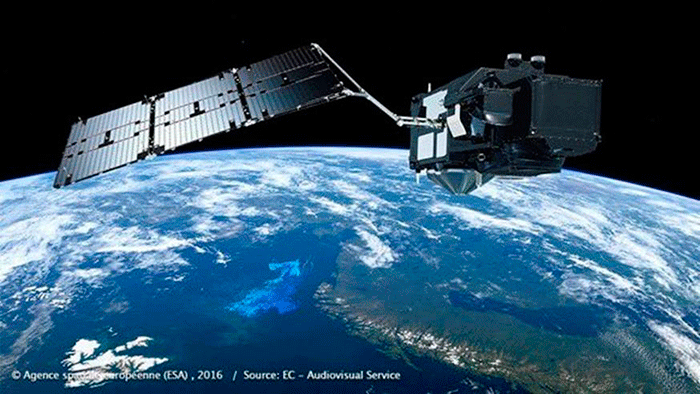GMV previews the Copernicus program’s observation requirements for agriculture

GMV took part in the Conference on Copernicus Applications for Farming put on by the Ministry of Agriculture, Fisheries, Food and the Environment (Ministerio de Agricultura y Pesca, Alimentación y Medio Ambiente) on 11 May in Seville, with the collaboration of the Industrial Technology Development Center (CDTI) and the Regional Authority of Andalusia (Junta de Andalucía).
This conference is part of the ongoing effort to bring the European Commission’s Copernicus program to wider notice in Spain. It focused on the beneficial use of the European Copernicus program’s satellite data for monitoring the state of the environment and agriculture.
Copernicus services process and analyze both satellite and in situ data, integrate them with other sources and validate results to transform them into value-added information. The data series, now stretching back decades, can be checked and compared to pinpoint and monitor any trend changes. Vegetation growth patterns and harvest production figures are examined to improve forecasts. Thematic maps are also produced for final users, identifying the crop growth rate and any field anomalies for immediate correction by watering, fertilizing or other remedial measures.
GMV is currently leading the European Commission framework program which sets out to define user requirements for the future generation of Copernicus satellites, by means of which Europe is now building up its own earth observation capability.
The user requirement database now has nearly 4000 records referring to the six thematic areas of Copernicus, namely atmosphere monitoring, marine monitoring, land monitoring, climate change, emergency management and security.
Julia Yagüe, GMV’s Copernicus Services Manager, took part in the panel discussion “Opportunities for Spanish industry and public research organizations”, giving a preview of the agriculture observation requirements to be met by future satellites, as expressed by a small sector of users working on land monitoring applications.
Prime among these requirements featured real-time crop monitoring throughout the growing cycle, early plague detection, early detection of year-to-year production changes and an updated crop inventory by type and area.
GMV also announced the Commission’s interest in extending the requirements study for the design of Copernicus’s future space component to take in such across-the-board areas as agriculture, water resources, cultural heritage, insurance and tourism.